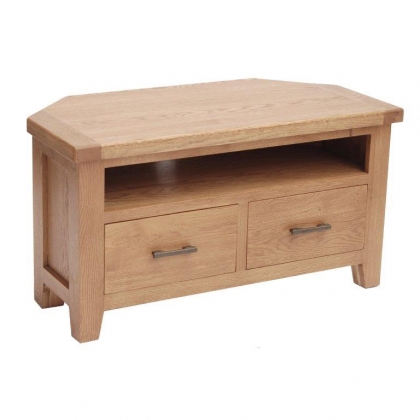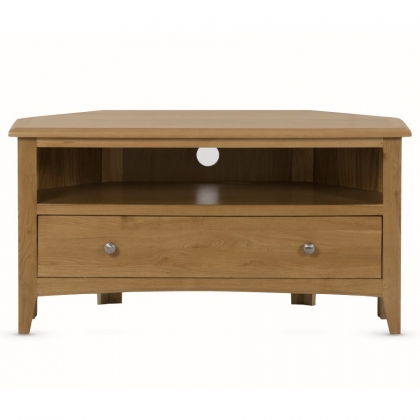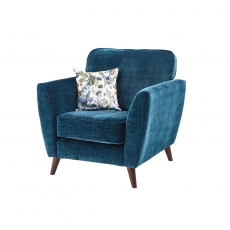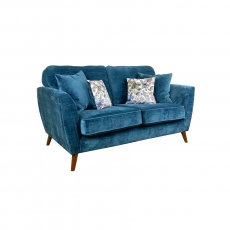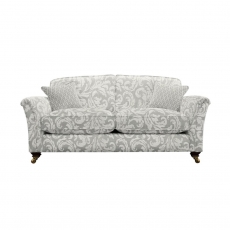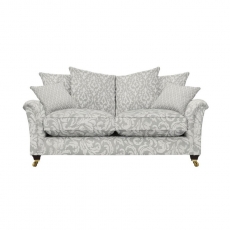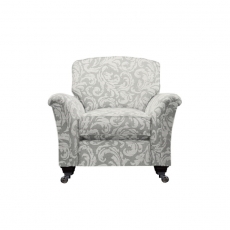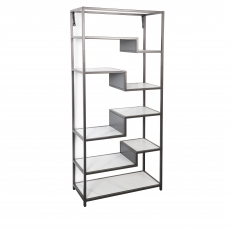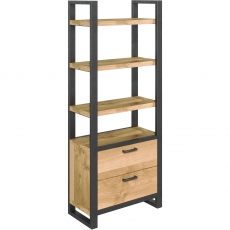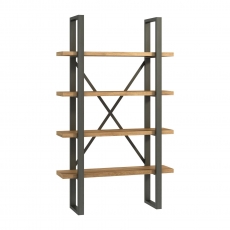Where to Place a TV in the Living Room: 6 Ideas for Every Home
The living room is the hub of the home. It's where the whole family can congregate to spend quality time together, whether snuggling down to watch a movie or experiencing sporting history. But where, oh where, should you place the TV in your living room?
Aside from getting the right viewing angle so nobody has to strain their neck, you also want the TV to flow with your living room design and not stick out like a sore thumb.
Not only that, but TVs nowadays are much bigger than the old box ones, so finding somewhere for it to comfortably fit without dominating the whole room can be a challenge – but it’s most definitely not impossible.
No matter if you’ve just moved into a new home or you’re reshuffling your living room furniture layout, here are some tips to help you decide where to place your TV.
In this Guide:
Our Simple 6 TV Placement Ideas for a Stylish Living Room
While not all of us are Kelly Hoppen, we can still use some basic interior design tips to help us figure out where the TV might be best placed.
The TV will become a focal point in the room, so it’s important to find a spot that not only looks good but also is practical for everyday use.
That means you don’t want it to be tucked against a wall surrounded by clutter, but rather focus on creating a comfortable viewing experience and a visually appealing section of your home.
If you’d rather not draw too much attention to your TV, there are ways you can subtly incorporate it into your living room's layout and lead the eye to other elements, like a beautiful bookcase.
Whatever role you want your TV to play in your living room, here are some ideas to help you decide where to place it:
1. Position the TV in the Corner of the Living Room
One of the most classic positions for a TV in a living room is tucked away in the corner.
For many living rooms, this is the ideal placement as it allows the majority of the furniture a decent vantage point while ensuring the TV isn't the main focal point in the room.
To make a television look good in the corner of your living room, you'll need a corner TV unit that contours to the shape of the room rather than having to place a unit awkwardly at an angle (which is bound to cause a few knocked knees).
Units like our Hampton Dining Corner TV Unit are perfect for ensuring the TV is as far back as possible. This is a good option for smaller living rooms where you want to maximise your space.
If you need space at the back for sockets, wires, or even floor lamps, corner units with a flatter back panel, like our Kilburn Dining Corner unit.
This furniture piece means your TV can fit comfortably in the corner while leaving plenty of space on the unit shelf for miscellaneous things – such as a gaming console or DVD player (if you're not a streaming-only household, that is) – and room behind the unit to place a lamp or organise cables and wires.
2. Mount the TV on a Feature Wall
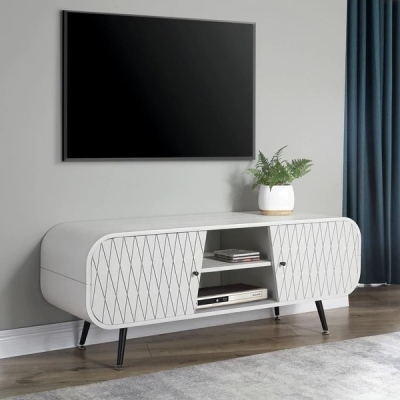
A feature wall is already a lovely focal point in a room, so why not make it even more eye-catching by mounting your TV on it? This is especially great if you have a large wall with nothing else going on.
Plus, it’s a fantastic hack for small living rooms, as it frees up floor space and makes the room feel less cluttered.
If you're worried about how to hide those pesky cords, consider using a cord cover or even painting them the same colour as your wall for a seamless look.
If you're not sure where to start when it comes to creating a feature wall, consider using statement wallpaper, paint, or even a gallery wall of art.
And because we love a coordinating room, you can add a rug or upgrade your sofa cushions to match the colours or patterns in your feature wall.
Don't be afraid to get creative and have fun with it – after all, it's your space to express yourself and make a statement!
3. Conceal the Television in a Cabinet
We know not everyone wants to make their TV the main character of their living room, and that's where clever cabinet solutions come in.
By concealing the TV, you reduce distractions, inviting family and friends to engage in meaningful conversations and shared activities rather than putting on Harry Potter for the millionth time.
Plus, a stylish cabinet adds an extra touch of sophistication to your living room and can serve as added storage for books, board games, or other decor pieces.
But when you do want a bit of screen time to unwind, simply open the cabinet doors to reveal the TV, allowing it to blend seamlessly into your space without dominating it when not in use.
An open-shelf unit works just as well. On the shelves, you can display your favourite photos, plants, or decorative items, and the TV becomes less prominent in the room.
We think the Fusion Open Shelf Unit is a fantastic piece for placing a smaller TV screen on the second or third shelf. Its modern industrial style is extremely popular, and it matches many styles of furniture.
But if industrial interiors aren’t your thing, we have plenty of display units in different designs to suit your taste.
4. Position the TV in the Bay Window
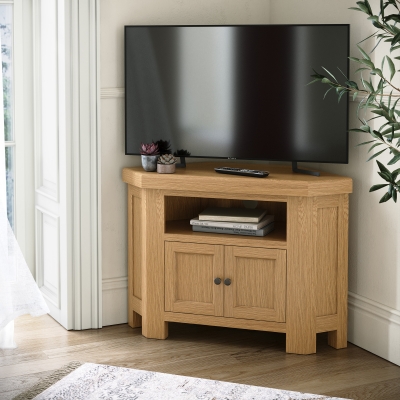
If your living room has a bay window, take full advantage of it!
Positioning your TV here not only creates a unique focal point in the room, but it also allows for natural light to filter in while you watch your favourite shows or movies.
You can also add some cosy seating options, such as a small 2-seater sofa and matching fabric armchairs in a semicircle around the TV, creating a comfortable and inviting lounging zone.
By integrating the TV into this often underutilised space, you also create an illusion of a larger and more open room. The TV takes up less space in the actual living area, making it feel less cluttered and more spacious.
When positioning your TV in a bay window, consider the glare and lighting. Installing Venetian blinds or light-filtering curtains can help make watching TV more enjoyable during the day.
5. Surround the TV With Bookshelves
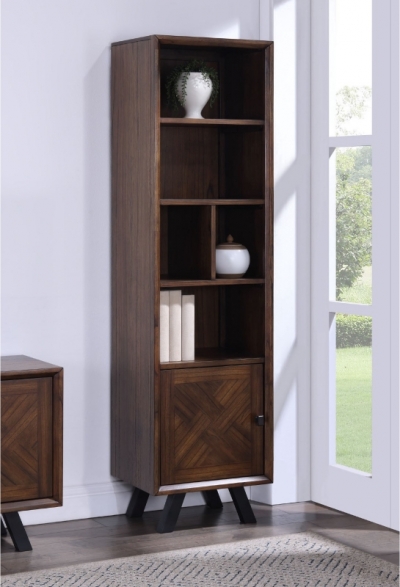
Bookshelves and bookcases can provide a stylish and functional backdrop for your TV in the living room. By placing bookshelves on either side or above the TV, you create a balanced look.
This works even better if all of your living room furniture matches, as it creates a seamless and cohesive design. You can even create your own entertainment centre by using a combination of bookshelves and stands.
Mixing and matching bookcases of various heights is a great way to help the TV blend in.
For example, pair the Fusion Bookshelf with the Fusion Open Shelf Unit or select different-sized bookcases to fit whatever space you have in your room.
To keep the look tidy, consider adding some baskets or decorative boxes to store remotes and other TV accessories, which you can pop onto the bookcase shelves.
Of course, leave room on the shelves for books, plants, and other decorative items to add some personality to your entertainment centre.
6. Keep it Low & in an Alcove
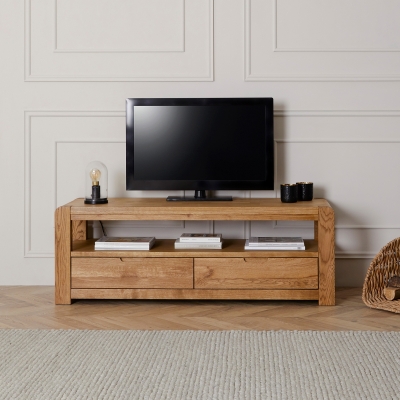
Positioning your TV low down in a recessed alcove effectively balances accessibility with subtlety. This placement ensures the screen is easily viewable without dominating the room's design.
By tucking the TV away in an alcove, it becomes a functional part of the decor rather than the central focus, allowing other design elements to shine.
Placing your TV on a small coffee table, like the Style Round Coffee Table, is the ideal way to keep it out of sight and out of mind.
This approach maintains a clean aesthetic, inviting a sense of harmony while still providing the convenience of enjoying your favourite shows without distractions.
Where Should I Put My TV in an Awkward Living Room?
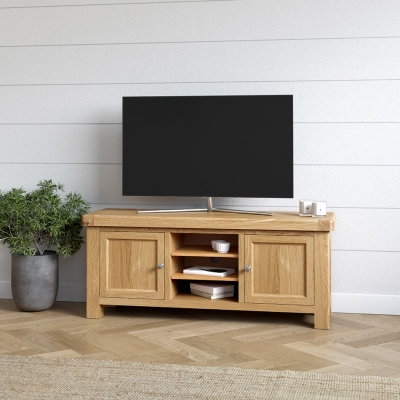
An awkward living room doesn't mean you have to sacrifice having a well-placed TV. In fact, creatively positioning the TV can enhance the space and make the awkward shape a feature rather than a bug.
If your awkward living room has limited wall space, we'd recommend surrounding the TV with bookshelves, like we outlined above, for a seamless look. This means your bookshelves and TV can be on the same wall without separating it into two halves.
You can also arrange furniture to create a cosy viewing area that encourages the family to relax together. Remember to consider the distance between your TV and seating, especially if you have a long living room!
Prioritising the comfort and aesthetics of your living room is key to making an awkward space seem inviting, and strategically positioning the TV can minimise distractions from other questionable architectural features.
What is the Best Place to Put a TV in a Living Room With a Fireplace?
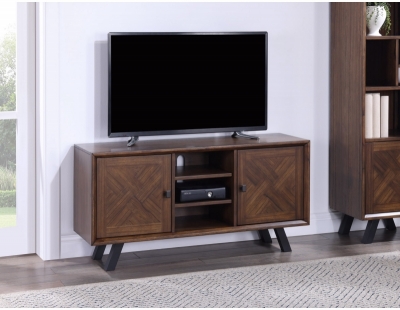
When placing a TV in a living room with a fireplace, you have to grapple with making the fireplace the focal point of the room or having the TV as the main feature.
It's best to position it at a comfortable viewing height (so probably not mounted above the mantelpiece!) while ensuring it doesn’t compete with the fireplace as a focal point.
While it's popular to mount the TV above the fireplace, you should make sure it's at a suitable height to avoid neck strain, which is often difficult to achieve.
Alternatively, place the TV on a side wall opposite or adjacent to the fireplace for a balanced look. This also allows you to use your fireplace as a stand-alone feature when you want.
Mounting the TV on a feature wall instead of over the fireplace allows both the TV and the fireplace to shine!
Tips for Practical But Stylish TV Placement
There are other things to consider besides the general placement of your TV and making the most of your space.
Things like glare from windows and being able to view the screen from every angle are important, too, so make sure you think about these before deciding on which of our 6 layout ideas will work best for your home.
Avoid Glare
While letting natural light into your living room is important, glare from windows or skylights can affect some TV screens.
To prevent this, consider placing your TV in a spot where it won't be directly facing a window or where you can easily close curtains or blinds when needed.
You may also want to invest in an anti-glare screen protector for your TV, especially if you have large windows and no other possible placement options.
Mount at a Comfortable Height
Nobody wants to have to crane their neck to watch TV. When deciding on a layout, make sure your TV is mounted at a comfortable height for viewing.
It should be mounted at eye level when seated to avoid neck or shoulder strain. Aim for 42-48 inches from the floor to the centre of the screen.
Or, if you're unsure of the best height, have someone adjust the TV while you sit in your usual viewing spot to find the perfect position.
Leave Room for Ventilation
It might not be something you first think about, but you need to leave some room for the TV to prevent overheating. Panasonic says proper ventilation is achieved with a space of at least 10 cm.
If your TV is too close to the wall, it can trap heat. And while most TVs are designed with ventilation in mind, it's still important to give them some space.
Consider Viewing Distance
In addition to the screen height, it's also important to consider the viewing distance for optimum viewing experience.
Sony says that, for HD TVs, the viewing distance should be three times the vertical size of the screen.
For example, a 43-inch TV should be placed 67 inches away from the sofa or chair you sit in for viewing. And for 4K models, this should be 1.5 times the vertical size of the screen.
Key Takeaways: Finding the Perfect TV Placement in Your Living Room
Whether you want to make your TV the focal point of your living room or you'd rather it be as hidden as possible, there's a tip, trick, or piece of furniture to help you get the living room of your dreams.
And best of all, it doesn't have to be expensive.
At Fairway Furniture, we stock a wide range of living room furniture that's perfect for showcasing your TV in a stylish yet functional way. Enjoy our FREE 5-Year Guarantee on every order!
FAQs
When deciding where to place your TV, consider the room's layout, natural light, and seating arrangement. Aim for a wall that provides a comfortable viewing angle while minimising glare from windows to enhance your overall viewing experience.
When placing a TV in a living room with windows, position it away from direct sunlight to minimise glare. Consider using curtains or blinds to control light levels, ensuring a comfortable viewing experience without distractions from the natural light.
The ideal distance from a TV in the living room depends on screen size. As a general guideline, sit approximately 1.5 to 2.5 times the diagonal length of the screen away for optimal viewing comfort.
The best place for a TV in a small living room is on a wall that avoids glare while maintaining a comfortable viewing distance. Consider mounting it or using multifunctional furniture to optimise your space and enhance the room's overall design.
In an open-concept living room, we recommend positioning the TV where it can be easily viewed from both the living and dining areas. Consider using a swivel mount or multi-functional furniture to provide a comfortable viewing experience while maintaining flow within the space.







